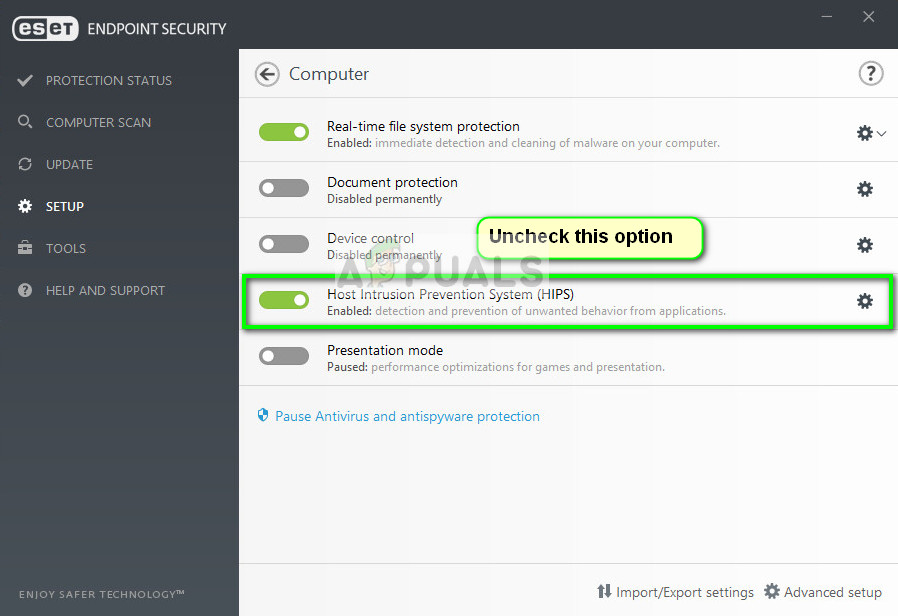Fix: Ctrl Alt Del not Working
Ctrl + Alt + Del is a popular key sequence used by thousands of users each day to escape from an issue or for launching the task manager to end a problematic program. This sequence of keys sends a command to the operating system to immediately bring forth another window which consists of options like signing out, launching the task manager, switching between users etc.

The reasons for the sequence not working are very generic. It may either be your keyboard or some malware on your computer which prevents the initiation of the command. In some cases, the antivirus proved to be a culprit too. We will go through each of the solutions one by one starting from the most effective one.
Note: If you are attempting to open the task manager, you can use the following methods too:
- Press Windows + R, type “taskmgr” in the dialogue box and press Enter.
- Right-click on the Windows icon and select Task manager.
- Press Ctrl + Alt + Esc to launch the task manager directly.
Solution 1: Checking your Antivirus Software – ESET
There were numerous reports which suggested that ESET Nod had a feature which was causing the sequence to not being recognized. The antivirus intercepted the signal and handled it instead of passing it to the system. HIPS, also known as Host-based Intrusion Prevention turned out to be the culprit. HIPS monitors your system and used a predefined set of rules to intercept suspicious activity. We will disable this feature and check again if Ctrl + Alt + Del is working.
- Launch ESET and click on the Setup option from the left navigation bar.
- Now uncheck the option Host Intrusion Prevention System (HIPS).

- Restart your computer completely and check if the problem has been solved.
If this doesn’t work, make sure there are no conflicts other than this option. You can even try disabling the antivirus temporarily to troubleshoot.
Solution 2: Checking for malicious programs
If the antivirus isn’t conflicting with the mechanism, it is highly likely that there are malicious programs installed on your computer which are causing this issue. These programs, along with monitoring your activity and attacking your data, also cause system operations to halt and intercepts such signals before they are even sent to the OS.
Scan your computer with renowned antivirus programs such as Malwarebytes or Microsoft Security Essentials and make sure all the virus definitions are up to date. Confirm that there are no keyloggers running in the background or any program which might have direct access to the input done on your computer. Once you are absolutely sure that your computer is clean and free from all malware, only then continue with the other solutions.
Solution 3: Checking your Keyboard
Before we move on to more technical solutions, it is worth checking if your keyboard is working properly. If you are using a Bluetooth keyboard, make sure it is connected properly to your computer and all other keys are working correctly as well. You can also perform a reset of the keyboard connection. Plug out your keyboard, turn off your computer and take out the power cable. Let it be for a few minutes before turning it back on. Once the computer is turned on, plug in your keyboard and then try pressing Ctrl + Alt + Del. See if the sequence works.
If it doesn’t, you can go ahead and reinstall your keyboard drivers.
- Press Windows + R, type “devmgmt.msc” in the dialogue box and press Enter.
- Expand the category Keyboards, right-click on your keyboard and select Update driver.

- Now there are two options through which you can update your keyboard drivers. Either update them automatically or manually. If automatic update doesn’t work, download your keyboard specific drivers from the manufacturer’s website and then use the manual update process.

- Restart your computer completely and check if the problem is solved.
Solution 4: Making changes to the Registry
Your Windows registry has a key ‘DisableTaskMgr’ which gives your control whether to enable or disable the task manager. It is possible that either you or some other program has made changes to the registry which is causing the task manager to not open. Do note that this solution is for those people who are unable to open the task manager but their sequence Ctrl + Alt + Del is working perfectly as expected.
- Press Windows + R, type “regedit” in the dialogue box and press Enter.
- Once in the registry editor, navigate to the following key:
HKEY_CURRENT_USER\Software\Microsoft\Windows\CurrentVersion\Policies\System
If this key isn’t present on your computer, navigate to the following path and create a key manually. You can skip to the changing of variables if the key is already present.
HKEY_CURRENT_USER\Software\Microsoft\Windows\CurrentVersion\Policies
- Click New > Key and name the key as System. Now select the new key which you just made.

- If the value “DisableTaskMgr” is already available, open its properties by double-clicking it. If it isn’t, right-click on the blank screen and select New > DWORD (32-bit) Value. Name the DWORD accordingly.

- Set the keyword’s value as 0 and press OK to save changes.

- Restart your computer completely and check if you can launch the task manager with ease.
Solution 5: Performing a System Restore
If all the above methods are not working and you still cannot get any response out of Ctrl + Alt + Del, you can perform a system restore after backing up your data.
System restore rollbacks your Windows to the last time it was working correctly. The restoring mechanism automatically creates backups either periodically or in-time whenever you install a new update.
- Press Windows + S to launch the start menu’s search bar. Type “restore” in the dialogue box and select the first program which comes in the result.
- One in the restore settings, press System Restore present at the beginning of the window under the tab of System Protection.

- Now a wizard will open navigating you through all the steps to restore your system. You can either select the recommended restore point or choose a different restore point. Press Next and proceed with all the further instructions.
- Now select the restore point from the list of options available. If you have more than one system restore points, they will be listed here.

- Now windows will confirm your actions for the last time before it starts the system restore process. Save all your work and backup important files just in case and proceed with the process.
Note: You can also get your hard drive checked if the problem is persisting.




